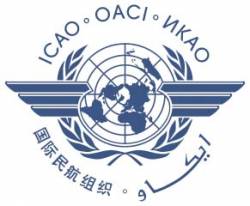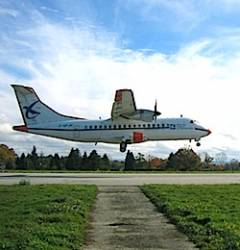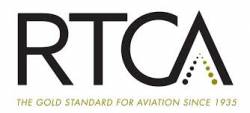
U.S. lawmakers, dissatisfied with the pace of international efforts to prevent losses like that of an Malaysia Airlines plane last year, may push through legislation requiring tracking capability on planes operating in the United States.
Nearly a year after flight MH370 disappeared over the Indian Ocean, the International Civil Aviation Organization (ICAO) is a year away from adopting a standard for aircraft tracking technology, Ambassador Michael Lawson, the U. S. representative to the organization told lawmakers on Wednesday.
U.S. lawmakers, dissatisfied with the pace of international efforts to prevent losses like that of an Malaysia Airlines plane last year, may push through legislation requiring tracking capability on planes operating in the United States.
Nearly a year after flight MH370 disappeared over the Indian Ocean, the International Civil Aviation Organization (ICAO) is a year away from adopting a standard for aircraft tracking technology, Ambassador Michael Lawson, the U. S. representative to the organization told lawmakers on Wednesday.
ICAO was set to send letters today (February 27, 2015) recommending adoption of a new 15-minute aircraft tracking standard, Lawson told the House Subcommittee on Transportation and Public Assets. The subcommittee, which is under the Committee on Oversight and Government Reform, held a hearing February 25 at which Lawson said ICAO would consider comments on the proposal and then the ICAO Council would, according to the schedule, vote on the new standard in March 2016.
“The planned global applicability date is November of 2016,” Lawson said.
Although Lawson described ICAO as acting with “an appropriate sense of urgency,” subcommittee Chairman Rep. John Mica appeared unimpressed.
Even if ICAO adopted the measure on schedule, Mica said, it still would take years for countries and industry to implement the proposal according to information from one of ICAO’s working groups.
“We’re looking at two to five years — 2018 to 2023 or something — before this is implemented,” said Mica, a Republican from Florida.
The chairman told the panel he was considering legislation to require U.S. airlines and carriers coming into the United States to implement measures sooner.
“We’ve been the leader,” Mica said. “We need to maintain that leadership role. We also need to help set the standard for the rest of the world. And there will be Americans flying on some of those planes around the globe. We can’t guarantee all this [will be] in place instantly but I think we can motivate and initiate action that will light a fire —sometimes you have to do that.”
“The problem is not in the U.S.” said Christopher Hart, the acting chairman of the
National Transportation Safety Board, “the problem is in remote locations.”
“That’s true, Mica responded, “but again we would set a standard with which we would hope the others would comply.”
Two bi-partisan members of the subcommittee, acting together, have already introduced and cosponsored legislation aimed at implementing aircraft tracking.
Rep. David Price, D-N.C., introduced the Safe Aviation and Flight Emergency Tracking Act of 2015. The bill would require the Federal Aviation Administration to mandate aircraft be equipped with technology enabling “continuous tracking of information regarding the aircraft during flight and the timely and cost effective recovery of the cockpit voice recorder and flight data recorder in the event of a crash or other serious incident.”
American aviation regulators would also be required to investigate automatic dependent surveillance, automatic deployable flight recorders, emergency locator transmitters, and satellite navigation and communications as well as work with ICAO and other stakeholders to develop and implement international flight tracking standards.
The Safe Aviation and Flight Enhancement (SAFE) Act of 2015 (H.R. 772), which was introduced by Rep. John Duncan, R- Tenn., would require that aircraft be equipped with a deployable recorder system. Such systems comprise a digital flight recorder, a cockpit voice recorder and an emergency locator transmitter in a crash hardened, survivable “black box” that would be released on impact.
Airline Industry Says "Wait and See"
The issue is not just one of equipage, Lawson told lawmakers, but must also include coordination of airline practices, air traffic control procedures, search-and-rescue capabilities, and accident investigation processes.
“I applaud your approach,” said Lawson, “but it’s not just technology that’s going to solve this problem. It’s the procedures that are in place with respect to the technologies that exist and that are going to exist.”
Kevin Hiatt, senior vice president of safety and flight operations at the International Air Transport Association, expressed particular concern about those future technologies. By not waiting for ICAO, he said, industry could find itself dealing with overlapping international requirements.
“I know you want to get your bill in, and I understand that the urgency is there,” Hiatt told Mica, “but we operate over 100,000 flights a day successfully. And, number two, we recognize that the leaders in the world such as the United States have great technology and they will obviously require more. But we have members from all over the world and what we do want to avoid is making sure we don’t have five or six or seven different black boxes that are regulated by different entities.”
Mica acknowledged the concern but pointed out that the operator of the lost flight was a member of IATA.
“We do have one of your members who was flying an aircraft, it will be a year ago next week; we don’t know where it is. We don’t know where 239 people are,” said Mica. “It wasn’t a second-rate aircraft or equipage, but something happened to deny us knowing where it is or being able to locate it — and this is one year later.”
Mica asked Hart about getting aircraft locator “pingers” to broadcast for more than 30 days.
“I know that we can make equipment that has ninety-day capability,” said Hart but added it wasn’t clear if that could be done with modifications. He said he would get back to Mica with an answer.
“I am not trying to impose something on industry that would be a great cost,” said Mica. In the long-term, he noted, the answer would be found in GNSS satellites and continuous data streaming from the aircraft.
Nonetheless Mica’s resolve to introduce legislation seemed to solidify as the hearing progressed. “We sure as heck can require standards for those flying into the United States,” he said.
Mica told the panelists he would look at giving airlines a year to a year and a half to comply.
“We can’t maybe rule the world, we don’t intend to,” he said, “but we have some leverage over what comes in and out of the United States and also the obligation to set the very best standards.”





